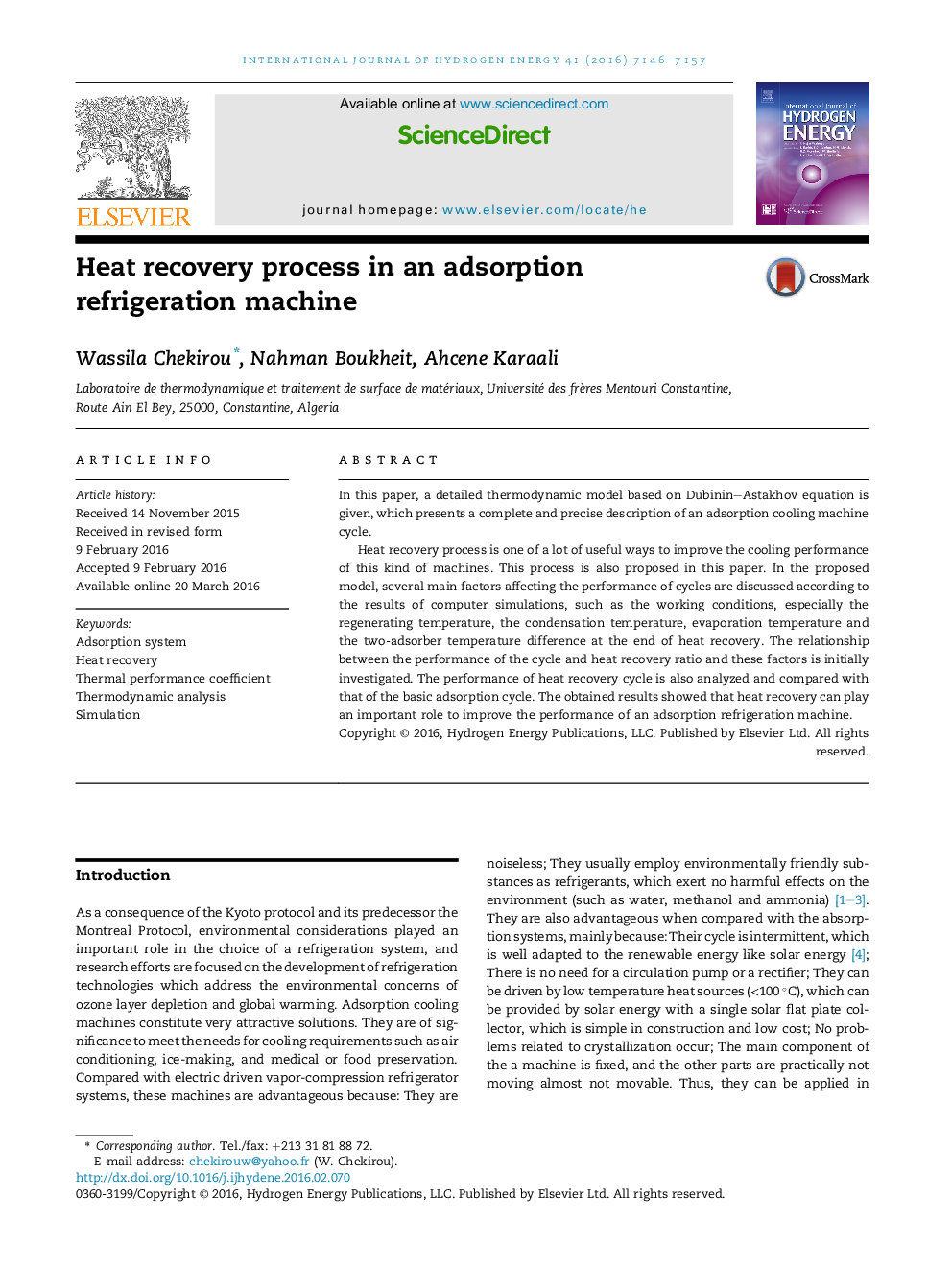| Article ID | Journal | Published Year | Pages | File Type |
|---|---|---|---|---|
| 1277458 | International Journal of Hydrogen Energy | 2016 | 12 Pages |
•The performance of heat recovery cycle is analyzed and compared with that of the basic adsorption cycle.•125 °C and 105 °C are the optimum regenerating temperatures in both cases with and without heat recovery, respectively.•The performance coefficient with heat recovery is 0.682, while in the case without heat recovery is 0.483.•With heat recovery process, the recovered thermal energy reach 29% of the total necessary heat input of the basic cycle; It can achieve 34.7%.•The performance coefficient and heat recovery ratio depend strongly on the operating temperatures.
In this paper, a detailed thermodynamic model based on Dubinin–Astakhov equation is given, which presents a complete and precise description of an adsorption cooling machine cycle.Heat recovery process is one of a lot of useful ways to improve the cooling performance of this kind of machines. This process is also proposed in this paper. In the proposed model, several main factors affecting the performance of cycles are discussed according to the results of computer simulations, such as the working conditions, especially the regenerating temperature, the condensation temperature, evaporation temperature and the two-adsorber temperature difference at the end of heat recovery. The relationship between the performance of the cycle and heat recovery ratio and these factors is initially investigated. The performance of heat recovery cycle is also analyzed and compared with that of the basic adsorption cycle. The obtained results showed that heat recovery can play an important role to improve the performance of an adsorption refrigeration machine.
